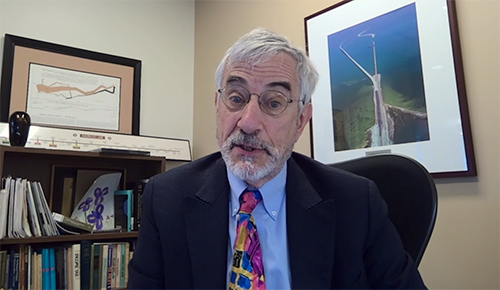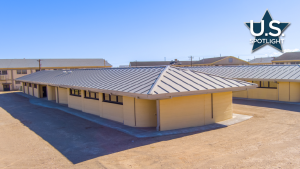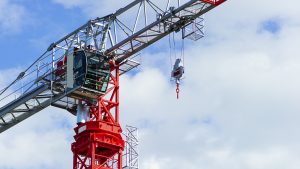A new U.S. construction forecast for 2025 finds most contractors who were surveyed are optimistic about growth across almost all sectors but they are leery about the impacts of president-elect Donald Trump’s threatened import tariffs and immigration policies.
Significant tariffs could cause inflation, which would hurt the economy and thwart investment enthusiasm, the contractors fear.
They are worried additional costs of up to 25 per cent on imported construction materials would increase the cost of doing business at a time when buyers are just getting used to relief from supply chain volatility.
The survey, titled A Year in the Balance: The 2025 Construction Hiring and Business Outlook, was released by the Associated General Contractors of America and consultant Sage on Jan. 8.
Ken Simonson, the association’s chief economist, said during an online news conference that tariffs on imports not only drive-up prices but they prompt retaliation from trading partners, further adding to costs.

Damaging tariffs
“I think nearly all economists, at least those who aren’t joining this administration, would say yes, that tariffs, particularly ones as steep as 25 per cent on our biggest trading partners, are very damaging to our own economy. They’re going to drive up prices,” he said.
The retaliation “takes away market share from certain U.S. firms, that lowers our competitiveness, it drives up prices for other items and generally weakens the economy. So I am quite worried about both specific effects on construction costs.”
Rex Kirby, CEO of Verdex Construction, based in Palm Beach, Fla., said during the presentation the state’s labor force is hard-working but unskilled with numerous immigrant workers who require supervision.
“They (the workers) will ask our teams in the field frequently, ‘Hey, what’s going to happen here? Are they trying to send me home?’ And, of course, we’re saying, ‘No, they’re not, as long as you’re not a felon,’” he said.
The Trump effect also includes the expectation regulations that stall project permitting will be removed, Simonson said.
High on data centers
The survey’s net reading — the percentage of respondents who expect the dollar value of projects to expand compared to the percentage who expect it to shrink — is positive for 15 of the 17 categories of construction. The highest net reading, 42 per cent, is for data centers.
There are also raised hopes for water and sewer projects, with a net reading of 35 per cent, and for power projects, with a net reading of 32 per cent.
The contractors are bullish about health care construction, with a net of 27 per cent for non-hospital health care facilities, such as clinics, testing facilities and medical labs, and 24 per cent for hospitals.
Simonson said one reason contractors have a relatively positive outlook for many public sector market segments is that more contractors are starting to see the effects of increased federal investments in infrastructure through Joe Biden administration legislation.
Eighteen per cent of respondents say they have worked on new federally funded infrastructure projects, double the nine per cent who said that was the case a year ago.
At the bottom end of the survey, the net reading for private office construction is minus three per cent.
The outlook for retail projects is negative five per cent.
Expectations are high for infrastructure: transportation structures, such as airport and rail projects, is at 29 per cent positive; bridge and highway work are net 24 per cent positive.
Contractors continue to see numerous project postponements and cancellations. Two-thirds of respondents say projects have been postponed or canceled.
Labor shortages continue to plague the industry, contractors reported. Nearly 80 per cent say it is difficult to find qualified hourly craft workers to hire and 88 per cent predict that it will remain difficult or get even harder to hire in 2025.
And they fear a Trump crackdown on immigration would further diminish the supply of qualified workers to hire.
Kirby offered an anecdote suggesting there was significant potential growth. His phone has not stopped ringing, he said, after the presidential election and the drop in interest rates by the Fed.
“What is that going to do to the capacity of the subcontractors to get the work done?” the Floridian asked.










Recent Comments